Having successfully achieved a significant rise in production volume with the 1945 MG TC, MG’s managers realised there was only one way forward as they sped toward the 1950s and that was further expansion.
The Nuffield Organization agreed, in theory, but were less than keen to divert their limited design resources to develop a new sports car that would always be a low-volume, if profitable, product compared to their fast-selling new Morris Minor and other saloons and commercials.
MG had to take the initiative to create what became the TD. Once those extra workers had been employed, the additional factory space created, the extra machine tools and plant ordered, paid for and installed, cutting volume back was not an economic option. They needed a new car, one that would give another significant jump in volume.
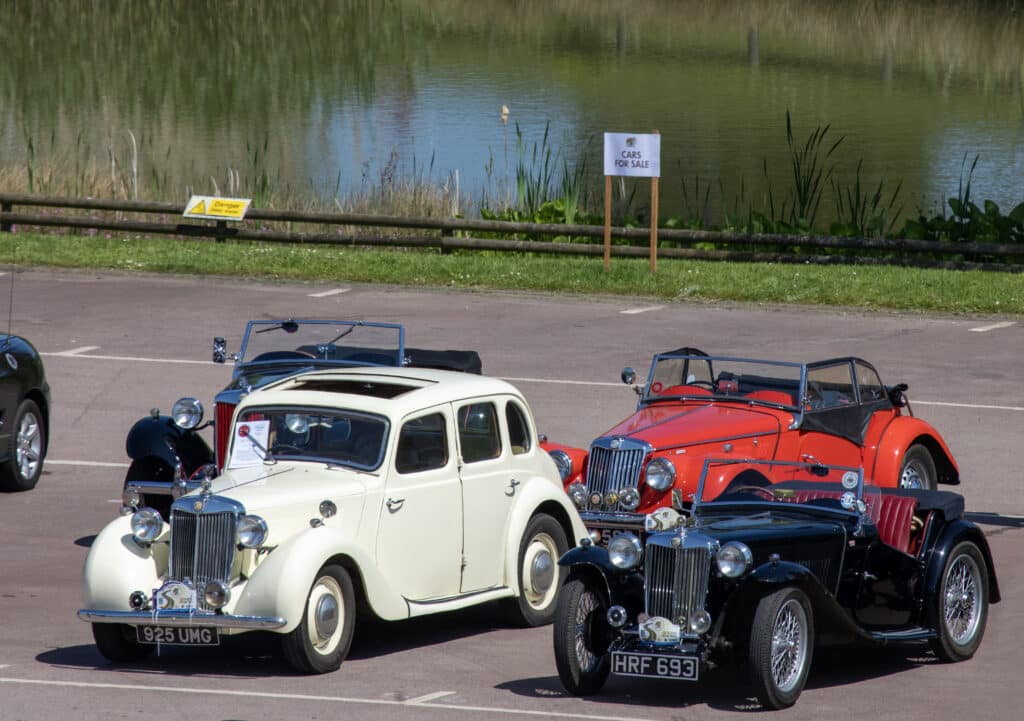
MG’s post war range consisted of the Y-Type Saloon and TC Midget. The Y-Type’s underpinnings would eventually help to create the TD and TF shown behind in this image.
Navigating Nuffield
MG TC s were flying out of Abingdon’s doors into the newly optimistic post-war world as quickly as they could be produced. But even then MG’s managers quickly realised there was a greater potential market for sports cars than the MG TC could satisfy.
They were convinced it was selling well despite its obvious 1930s mechanical and stylistic origins, not because of them. They started to think about the car that could replace it when it had been in production for just a few months. The parent Nuffield Group were content to rake in the profit, however, and focused their limited resources on higher volume areas of the market.
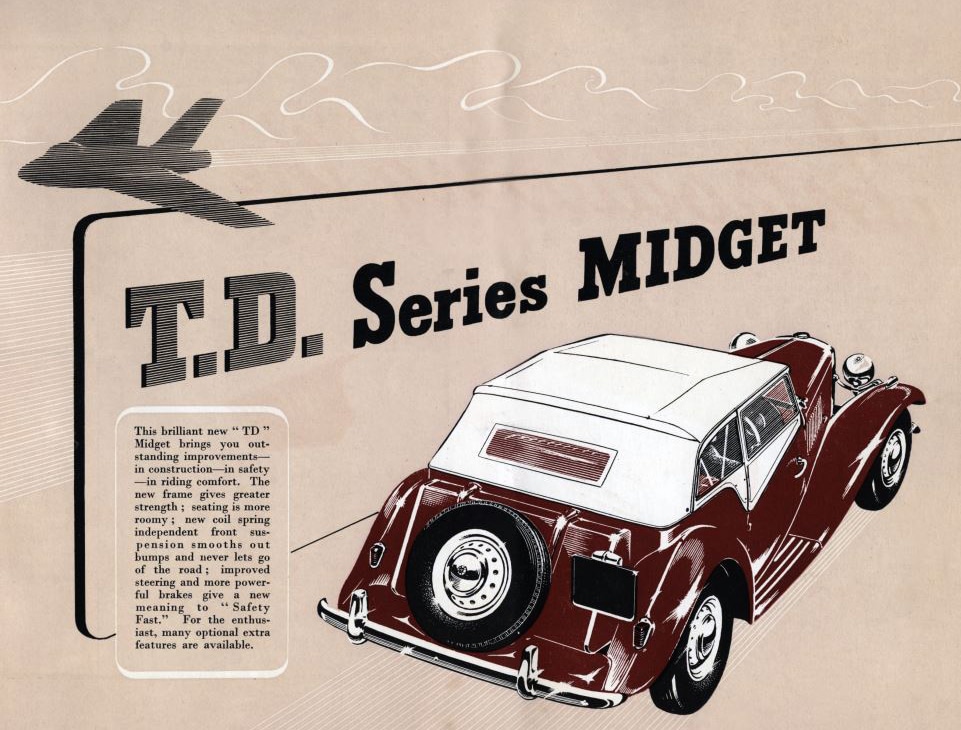
A US sales brochure for the TD that somehow managed to conflate it with a jet fighter, which was an obsession of the Detroit-based US motor industry at this time.
Export Drive
As war receded and the British government launched an export drive to pay off the debt Britain had accrued fighting fascism, the Nuffield Group had no thoughts of the amalgamation with Austin that would come in 1952. They were independent and in British terms, a huge player with an everyday car and commercial vehicle brand, Morris. Plus Wolseley making more luxurious cars that were much favoured by the police and government as well as Riley making superior sporting saloons and MG making outright sports cars.
The products for that portfolio all started life in the Morris drawing office at Cowley. This office boasted two names that are still known today, Alec Issigonis and Gerald Palmer. Lord Nuffield still ran the company, although he had started to become out of his depth technically, if not commercially. He had the good sense, however, to let Issigonis get on with designing and productionising a car. He disliked it and referred to it as ‘the poached egg’, project Mosquito. This became the 1948 Morris Minor.
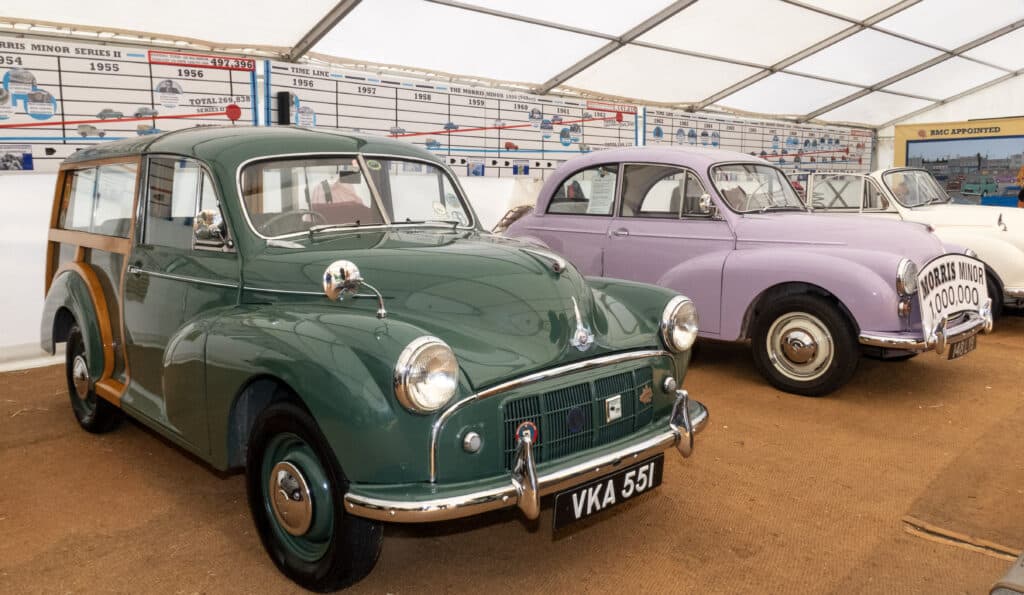
Issigonis had competed in hill climbing using a special he had built himself. He had a great interest in what was known as primary safety. Essentially, the idea of making the car nimble enough to avoid the accident in the first place rather than making the car more crash worthy. His monocoque Morris Minor design reflected these interests and had very accurate steering and good handling. It could have made a great basis for a new post-war Midget.
Cowley’s Midget
The approval of the Minor led to a little-known Cowley-based project, DO926. This started in late 1946 and could have become the successor to the MG TC. The idea was to create a new Midget based on the forthcoming Minor’s floorpan and component set.
Known as the MG Midget-Major, a hardtop model was made and that was followed by a full-size mock-up. Seen below, it was included with the proposed 1948 Nuffield car range. It wasn’t a project that Abingdon had any input into, and, it seems, knew little if anything about until it was up and running. This showed just how fractious the relationship between Abingdon and Morris’ Cowley HQ had become without Kimber.
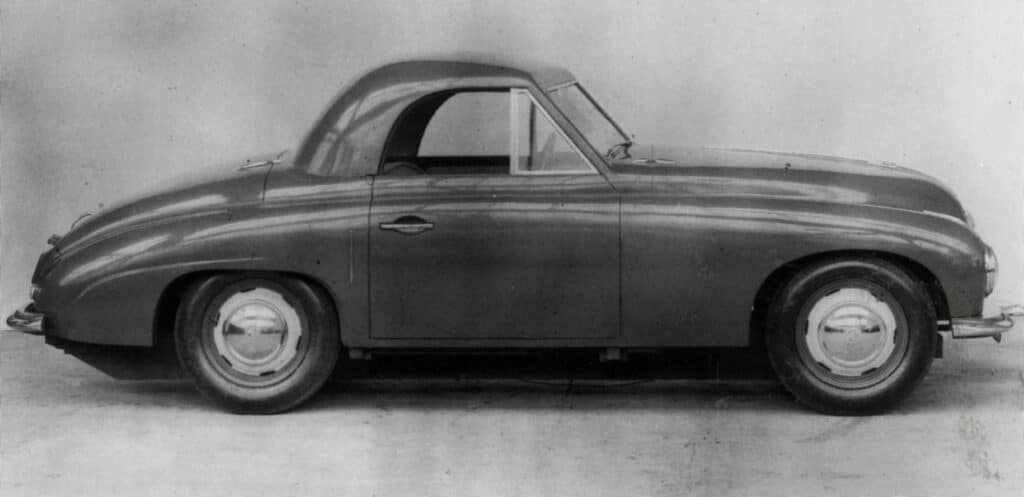
DO926 Midget Major
This DO926 Midget-Major small scale styling model was produced in 1946-47. The intention may have been to fit it with a still-born 1100cc overhead-cam ZC11G engine then being developed. Though Issigonis’ intention was to fit the Minor with a new flat-four engine that was to have been produced in both an 800cc and 1100cc form. Sadly, the flat-four project failed to get beyond the prototype stage. The Minor was launched with a modified version of Morris’ existing 918cc side valve engine.
A Minor-based Midget would certainly have handled well given the Minor’s reputation in that area. It also would have been quite financially astute as it would have shared many of the Minor’s components. It could have stayed in production a long time, and it may even have acquired the A-Series engine after BMC was created just as the Minor did.
The styling of this initial effort is neat but quite generic, however, almost bland. It would surely have at least acquired a more distinctive MG radiator grille had it progressed. Hindsight and the success of the Sprite-based Midget fifteen years later tends to indicate it could have been quite successful. However Abingdon were not enthused when they did learn about it, and it faded away. Sadly, it seems the mock-up didn’t survive.
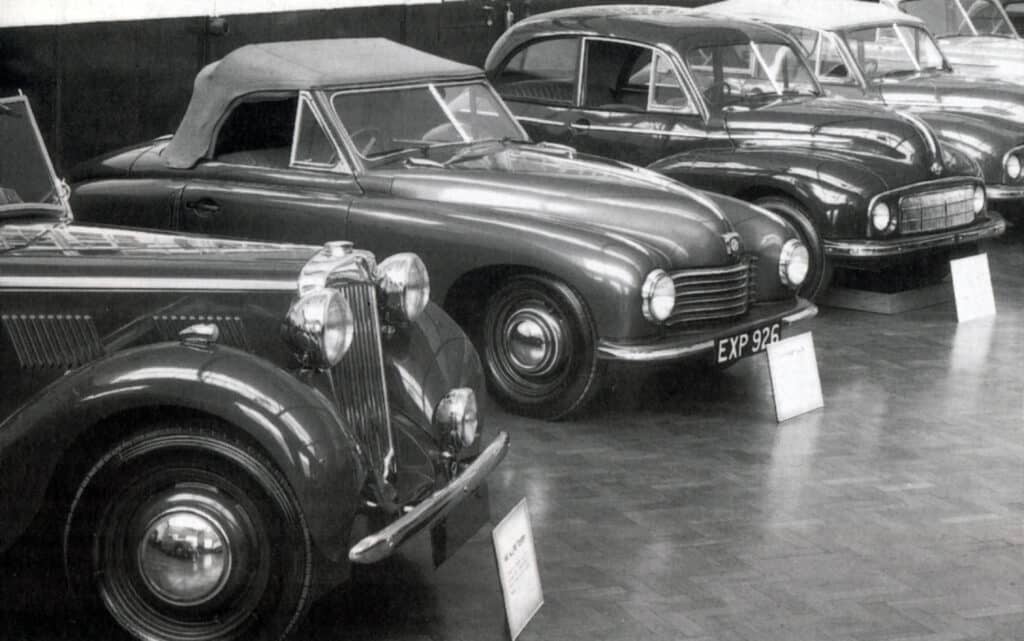
The full-size DO926 Midget-Major convertible mock-up, seen with the proposed 1948 Nuffield range in the Cowley viewing area between the existing MG YT and the yet-to-be-announced Minor.
Pop’s Brief Era
Post-war Abingdon was a busy place but was also going through transformation. In 1941, guiding light Cecil Kimber was unceremoniously sacked. Having created and built MG, he was dismissed after a disagreement with Miles Thomas over government work.
This left George ‘Pop’ Propert in charge, although he was very much ‘managed’ by Cowley. Along with Syd Enever and John Thornley, he petitioned Nuffield Chief Exec Reg Hanks for MG to be allowed to design a new car.
MG did not really have a full design office, and Cowley had no manpower, no time and no interest in doing it. It may also be said that there was no one in the Cowley design office who had a clear idea of what a new MG Midget would or should be.
The open YT or Tourer had initially been looked at in this vein. But it had turned out to be pleasantly uninspired as a sporting machine. Enever and Thornley agreed on one thing though. Their desire to keep Cowley out of MG’s affairs as much as possible!
So, when S.V. Smith, a development engineer at Cowley, suggested that if they were so keen to make a new car, they should do it themselves; they needed no second bidding. Within two weeks a rather crudely mocked up two-seater had been cobbled together. It was presented to Nuffield’s managers at Cowley wearing a sign hanging from one headlamp saying, ‘Something Like That’. Sadly, there are no known images of that mock-up. We will look at how it was built in part 4.
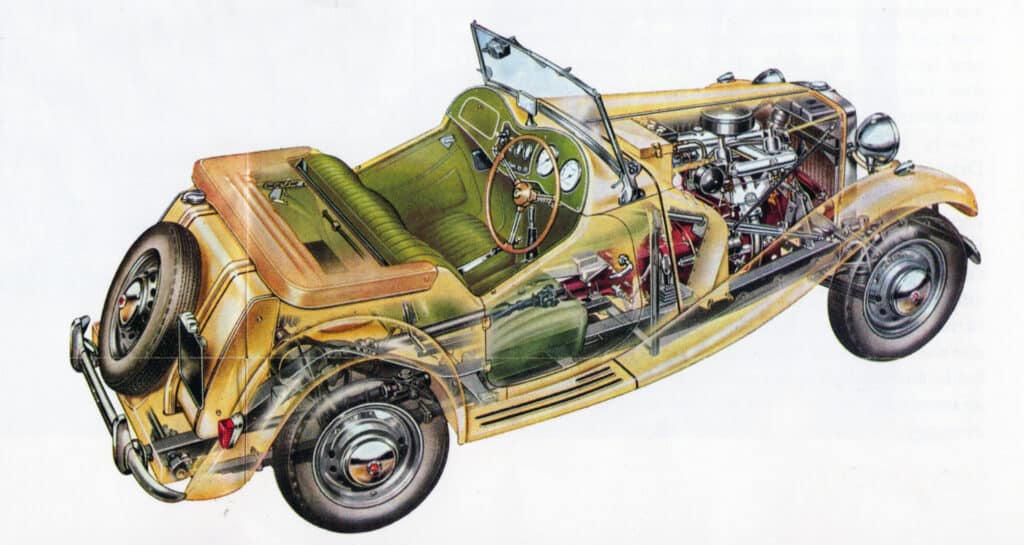
Credit: MGCC
Further Information
Read part 1 and part 2 of the article here:

